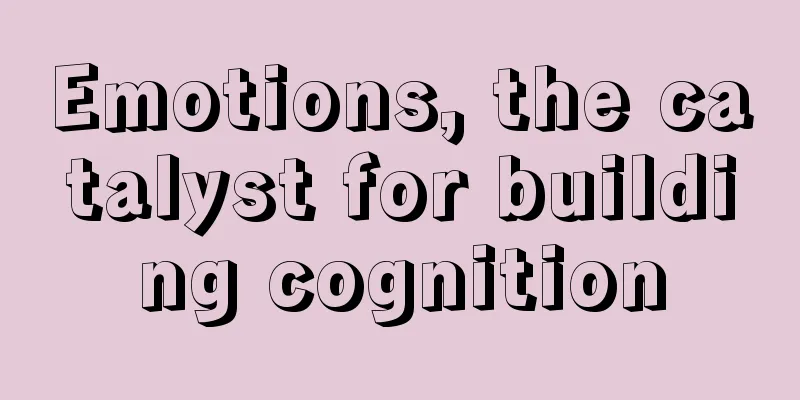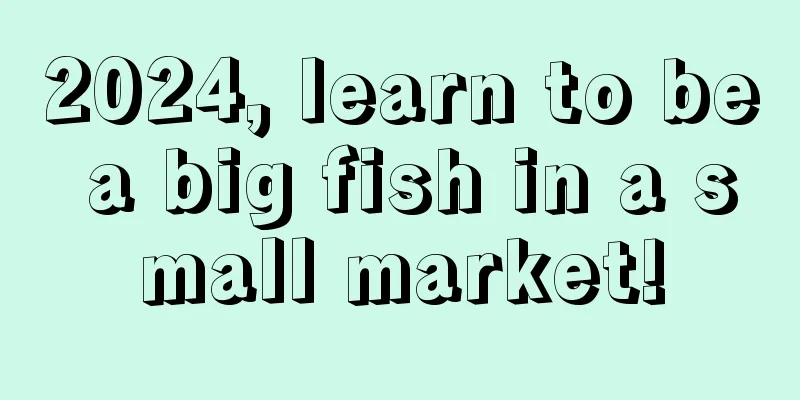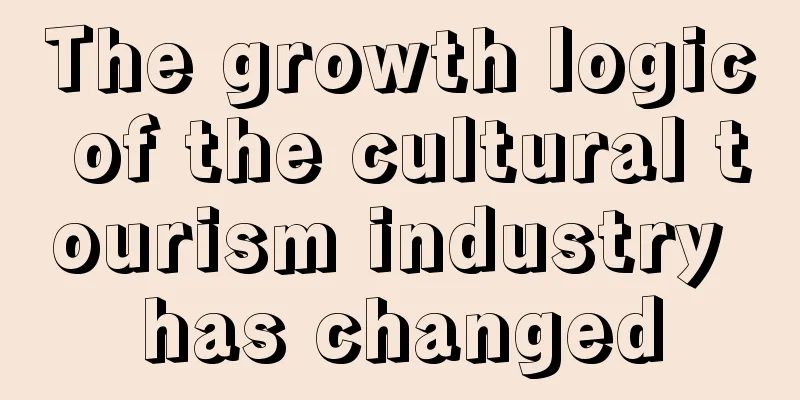Emotions, the catalyst for building cognition

Cognition is the basic psychological process by which people acquire and process information. The term "cognition" has become widely accepted in marketing thanks to the popularization of positioning theory. Positioning is to establish a brand perception in the minds of customers. This perception must represent a certain category or characteristic. When customers have relevant needs, this perception will manifest in their minds and make the brand their first choice. If this goal is achieved, it means that the company has successfully positioned its brand. How to successfully establish cognition in the minds of consumers? There are already hundreds of different answers to this question. I believe that anyone who does marketing can come up with a few methodologies. After all, positioning is still the most popular marketing theory at the moment. During the training course, I emphasized many times: There will never be any other theory that can hit the nail on the head and explain the process and results of brand work as simply and clearly as positioning. 1. Positioning is both a result and a processThe original meaning of positioning is to determine a direction. It is a verb, a word that represents the process and result. "How to establish cognition in the minds of consumers" - every consulting company has its own methodology. The interpretation of a concept can have different directions, and the depth of the interpretation of the concept will also be different. Everyone hopes to find the most in-depth answer and find the root of the problem. Finding the root cause of a problem is an ability, and expressing the answer in a simple and easy-to-understand way is even more of a superpower. Positioning has found the root of marketing, brought the psychological term "mind" into everyone's minds, and interpreted marketing behavior from a physiological mechanism. Secondly, we chose a good name that is easy to read, understand and remember. Readability represents the accuracy of information recognition. Consumers must have a cognitive basis for it. An element that has no cognitive basis in the minds of consumers cannot be recognized; understandability represents the processing speed of information. Consumers’ cognitive association links must be very short. An element that requires consumers to think for a long time before understanding is difficult to understand; rememberability represents the use value of information. Information without value cannot be stored by consumers for a long time. Therefore, with a deep understanding of the physiological level and a name that is easy to read, understand and remember, Trout has dug into the deepest treasure of marketing. No one will dig deeper than Trout in the future, unless scientists prove that the mind cannot store, process and feedback information, then the existence of the brand as "information" in the minds of consumers will no longer be valid, and positioning will be self-defeating. Positioning is easy to read, understand and remember, but most people's understanding of positioning still remains at the level of concepts and methodology. In this article, I don’t want to discuss with you what positioning is and how to establish cognition in the minds of consumers. The core content of my previous articles is about "people". "Consumers Can Lie" is about consumer research. Through some classic cases, I hope that everyone will not ignore the diversity of people. You can never fully understand a person. "Category is the cause, positioning is the result" is about the relationship between category and brand. I hope everyone understands that consumers use categories to solve their needs and use brands to simplify decision-making. "What is Mind" is about how to establish consumer cognition, and describes the physiological mechanism of consumers inputting, processing and outputting information. And "How to Learn Marketing Well" shares my work experience in a consulting company and some of my views on marketing. If you read these articles, you will find that I have quoted a lot of concepts from other disciplines to explain marketing theory and consumer behavior. This is the biggest difference between my official account. Instead of talking about some superficial methodologies, I prefer to study the psychology and physiology of consumers, and then study what kind of people the target customers are and why they have such consumption behaviors. This article is just my study notes. It contains less marketing knowledge, but more extended subjects. It involves the most concepts so far. It is boring to read. It is all physiological and psychological knowledge, and there are many theories of masters. But I sincerely hope that you can save it and read it slowly to understand how emotions affect our cognition. Emotions are really important! I said in "How to Learn Marketing Well" that there are two purposes of learning: one is to simplify the known, and the other is to supplement the unknown. The research on the known should not stop at "what kind of result will this knowledge achieve", but should extend to "why this knowledge achieves such a result". Only in this way can we find the unknown in the known and make rapid progress. A person who passively accepts information will not have any innovative value. 2. Pay attention to the importance of emotionsBefore understanding the importance of emotions, let us first correct a concept of the mind: the mind is not the brain, it is what the brain does. What we often call "consumer mind" is a broad and unified cognition formed by the development of something over time and the mutual influence between people. "Establishing a broad and unified cognition" is the result. What makes "people influence each other"? There are two reasons. Reason 1: We live in groups. Without groups, there will be no transmission of information, let alone mutual influence. The benefit of group living to our mental evolution is that the value of information has increased exponentially. We can gain benefits by exchanging knowledge and information, which means that more and more information enters the brain, and higher requirements are placed on the efficiency of the mind in processing information. As we obtain more and more information, the efficiency of the mind in processing information becomes higher and higher. Many problems at that time are no longer problems at the moment, and the value of information becomes greater and greater, and our minds evolve in a more intelligent direction. Reason 2: We are convinced that something will bring certain interests to us. This interest triggers personal emotions, which in turn causes the transmission of information and emotional resonance among groups. This is a process of interaction between cognition and emotion. Emotion and cognition are connected every moment in human psychological activities. In the past, we paid too much attention to cognition and ignored the value of emotions. In fact, how many people know what cognition is? They only know the tip of the iceberg from the positioning theory. On the premise of attaching importance to the role of cognition, we must pay attention to the impact of emotions on cognition. This is the purpose of writing this article. 3. What are emotions?1. From an evolutionary perspective, emotions are an adaptive function of humansDarwin's evolutionary perspective believes that emotions are evidence of the evolution of the human race . In his book "The Expression of the Face in Man and Animals", he pointed out that " emotions are adaptive functions derived from the evolution of higher animals and humans for survival." The physical and mental endowments of biological organisms have evolved over millions of years and have undergone qualitative changes and development in the process of adapting to survival. As a means of adaptation, emotions play a role in driving organisms to take actions and become an important psychological ability that controls the voluntary or involuntary, instinctive or cognitive behavior of organisms. 2. From a physiological perspective, emotions are a special product of the evolution and development of the neocortexEmotions are connected to the nerves that regulate and maintain life. Almost all levels of the nervous system are involved in the occurrence and changes of emotions. Every occurrence of emotion is the result of multi-level neurophysiological integration activities. As the nervous system develops, the psychological functions of higher animals become a more effective means of adapting to survival than morphological changes. As organisms evolve to the human stage, with the development of the cerebral cortex, the mechanism of human emotions includes the activities of the entire nervous system. The essential difference between human emotions and animal emotions is closely related to the evolution of the human cerebral cortex. Emotions are special products of the evolution and development of the neocortex. The growth in the volume and function of the neocortex shows a tremendous progress in the development of emotions. The formation and differentiation of the neocortex (the neocortex is a more advanced cortex. It is the majority of the mammalian cerebral cortex, located at the top of the cerebral hemisphere, about 2 to 4 mm thick, and divided into six layers. It is related to some higher functions such as perception, the generation of motor commands, spatial reasoning, consciousness, and human language.) The formation and differentiation of a large area indicates the formation and differentiation of the brain's higher sensory and motor systems, providing a channel for the external conduction and feedback of emotions. We often say that humans have more developed brains than animals, and the reason behind this is the different levels of development of the cerebral cortex. 3. From a physiological perspective, emotions are composed of three components: internal experience, external expression, and physiological activation.Subjective experience is a state of the brain, and the process it carries is the specific process of emotion as a psychological entity. It is the experience of the emotional process that provides motivation for behavior and plays an organizing or disintegrating role in cognition and behavior . The external form of emotion is expression, which is composed of facial muscle movement patterns, voice tone changes and body posture changes. In emotional reactions and emotional exchanges, people integrate these three expressions to achieve information transmission and mutual understanding. Through the explicit expression of emotions, the communication and transmission of emotions can become possible. Emotions occur at a certain level of physiological activation. Expressions are the carriers of emotional information. The externalization of expressions is the explicit behavior of experience. The activation of certain parts of the nervous system provides energy for the occurrence and activity of emotions. For example: the need, motivation and action of people to drink water are the result of the combination of the driving signal provided by the change of body fluid composition and the emotion of urgency. When the body fluid composition changes and people feel thirsty, it does not immediately lead to body failure, but the urgency of thirst makes people unbearable. This is because emotions amplify the internal drive and become a motivational force. The internal drive is a physiological need, and emotions are physiological reactions. 4. What impact do emotions have on us?Since emotions play such a central role in human evolution, what effect do they have on us all? 1. Emotions can change our thought processesPositive emotions can open our hearts and minds, broaden our thinking space and vision, help us discover and build new functions, new relationships, new knowledge and new ways of survival, thereby changing the brain and changing the way we interact with the world. Please believe that appearance is determined by the mind, and the environment is changed by the mind. Just imagining a happy memory or accepting a little kindness can make people easily find creative solutions when they encounter problems. Scientists at the Haas School of Business at the University of California, Berkeley, found that managers with more positive emotions are more accurate and careful in making decisions and are more adept at handling interpersonal relationships. 2. Emotions have common experiences and cultural characteristicsAs we said above, the outward manifestation of emotion is expression, while experience is the psychological entity of emotion. Emotional experience has a unique property, that is, the subjectively perceptible tone of each specific emotional experience is unchanged. The specific emotions experienced by individuals, such as happiness and sadness, have no individual or age differences, nor gender or national differences in tone. The situation that evokes a certain emotion and the type, intensity and duration of interest it arouses may be different each time, but the specific emotional tone it carries never changes, which means the pan-human nature of emotional experience. But it varies in different cultures and between different individuals. For example, the sadness caused by mourning for relatives is the same in any society, but how to express sadness is indeed influenced by culture, and the way of mourning depends on social customs. 3. Emotions can generate emotional resonance and influence group behaviorBecause emotions are universal, they are contagious and resonate. When people feel good, they are more likely to help strangers, which can set off a chain of events that are positive for you and the people around you . Once positive emotions are released, once you allow them to change the way you behave towards others, it ignites these cycles between people . The hot spots and phenomenal marketing behaviors we often talk about all create certain emotions. Emotions circulate among people who resonate with them, influence each other, and then produce group behavior. The communication of emotions not only promotes the exchange of ideas between people, but also can cause emotional reactions and resonance in the other party, infect each other, and generate empathy and transference. Many companies want to replicate a few marketing events that have gone viral. How can you make your marketing activities achieve an exponential communication effect? The answer is: resonate with the same frequency and create a strong emotional resonance. Different cultures and different cognitions lead to different degrees of intensity in our emotional resonance. Some people think that something is too common, while others think that something is too surprising . Since we want to go viral, we must find that widespread and strong emotional point. "Wide" refers to cognitive facts, and "strong" refers to emotional resonance. Remember what was said above, "emotions amplify internal drive and thus become motivational power." 5. How do emotions affect us?1. Emotions are heritableEmotion is a most useful and effective unique attribute that has been accumulated in the nervous system and brain structure for a long time. It becomes an inherent potential of the organism and can be passed on to future generations, enabling them to survive and reproduce. 2. Emotions are highly personalEmotions are determined more by a person's inner understanding than by external circumstances. You can't simply expect yourself to feel a positive emotion, but instead you have to find a very specific lever to unlock positive emotions. Thoughts and behaviors (cognition) are the levers of these positive emotions. 3. Emotions trigger specific behavioral tendencies, and specific behavioral tendencies reflect emotions“Specific behavioral tendencies” explain how the forces of natural selection have shaped emotions and preserved them as part of human nature. Second, it explains why emotions can affect a person's mind and body by initiating a series of physiological changes. Bursts of good feelings prompted ancient humans to expand and build when they felt safe and satisfied. Natural selection shaped our ancestors' ability to experience positive emotions and created the form and function of modern humans' experience of positive emotions. Physical pleasure and positive emotions affect our minds in different ways and on different time scales. 4. It’s hard to change emotional habitsThere is an old saying that "it is easy to change a country, but difficult to change a person's nature". It is possible to change consumers' deeply rooted emotional habits, but it is by no means easy. New research shows that it takes as much determination, effort and lifestyle changes to make positive emotions have a lasting impact on you as losing weight or lowering cholesterol levels, which is why a simple "don't worry, be happy" sounds empty. The key path to improving positive emotions is to find positive meaning more frequently in your daily life situations. And this "life situation" is used in marketing as "use scenario". We must not only create a use scenario for consumers, but also create an emotional experience for consumers to leverage consumption motivation. 5. Emotions and cognition shape personalityThe interaction between cognition and emotion injects motivational factors. When a certain emotion is often integrated into the cognitive process, it forms a basis for the connection between emotion and cognition. If the emotional process involves cognition, the relevant emotions will be filled into cognition. When a person is often in a cognitive-emotional combination, a structural system of emotional experience and cognitive evaluation in such occasions will gradually be formed, which can form a certain personality tendency. 6. What is the relationship between emotion and cognition?Emotion and cognition influence each other. Emotion and cognition are relatively independent systems, but they influence each other anytime and anywhere. Emotional processes, like cognitive processes, are functions of the brain. As a state, emotion often exists in the process of brain activity, affecting the choice of cognitive processing and dominating the direction of processing. Emotion and cognition interact with each other in connection. Emotion can initiate, interfere with, organize or destroy cognitive processes and behaviors; cognitive evaluation of things can initiate, transfer or change emotional reactions and experiences. Emotions not only drive cognitive activities, but also regulate cognitive processing and human behavior. Emotions can affect the selection of information by perception, monitor the flow of information, promote or hinder working memory, and interfere with decision-making, reasoning, and problem solving. Therefore, emotions can control behavior, control the coordination between organisms and the environment, and enable organisms to process environmental information in the best (relatively best) way. At the same time, cognitive processing induces emotions through neural activation in the evaluation of information. In this interactive process, cognition works based on the meaning of external situational events themselves; while emotions work based on the meaning of situational events to the organism through joy, anger, sorrow, and happiness (if there is only one sentence to remember in this article, it must be this one) . Emotions seem to be a monitoring system in the brain that regulates other psychological processes. 7. How does cognition affect emotions?(1) Arnold's theory of emotion evaluation: The perceptual process performs a preliminary screening of stimuli, and the cognitive process extracts relevant information from the information database and processes it according to the current stimulus information. Perception and cognition are essential intermediaries between stimulus events and the occurrence of emotions. (2) Lazarus's emotion cognition theory proposes that the nature of the interests of a person and the specific environment he is in determines his specific emotions. The same environment produces different emotional results for different people because it has different meanings to different people, and the different meanings are explained by different people's cognitive evaluations. Azarus proposed the theme of his entire theory: emotions are reactions to meanings, and this reaction is determined and completed through cognitive evaluation. Azarus put forward three key points when defining emotions:
(3) Lindsay and Norman’s information processing theory proposes that in the occurrence of emotions, it emphasizes both information processing in the brain and physiological activation. They transformed the emotional arousal process into an internal working system, namely the emotional arousal model, which includes several dynamic models:
If the perceptual analysis is consistent with the expected judgment, things will proceed smoothly without emotional release. If there is enough inconsistency, such as unexpected or against one's will, the cognitive comparator will quickly send information, mobilize neural processes, release chemicals, and change the activation state of the brain, and then emotions will occur. In terms of the issue of emotional occurrence, cognitive psychology emphasizes cognitive processing and incorporates neural activation intervention into cognitive processing. 8. How do emotions affect cognition?Emotions not only affect cognition in terms of quantity, but also in terms of its structure. Emotions play a driving and organizing role in cognition, and can also affect the speed and accuracy of information processing. Emotions affect the initiation, interference and termination of information processing. Emotions play a mediating role between external information and cognitive activities. Generally speaking , a certain level of emotional state has the effect of improving cognitive processing. Extremely high levels of emotional activation interfere with or even block cognitive processing, while too low activation is insufficient to maintain the activation required for cognitive processing. ( The advertisement of the five female doctors was an example of extremely high levels of emotional activation, which caused people to have a negative perception of it) The positive or negative characteristics of emotions can affect the selective processing of information. An experiment showed that when subjects with positive or negative emotions were asked to complete the same word memory task, those with positive emotions completed it better than those with negative emotions. This shows that the processing process is affected by the negative emotions that are concentrated in the center of attention and continue to interfere with the processing, thereby reducing the quality of processing. Emotions play an important role in determining the selection range of information processing. The interaction between cognition and emotion makes people's decisions vivid and powerful and puts them into action. Emotions also rely on the support of cognition and purpose. The combination of the two makes people more determined when necessary. Different information stimulates emotions differently. According to information processing theory, Hoffman divides the psychological process of cognitive mediation of emotions into three different levels of information processing: physical stimulation directly causes emotional reactions, the matching of physical stimulation and representation induces emotional reactions, and the meaning of stimulation induces emotional reactions.
Hoffman proposed two processing models to reveal the cognitive basis of stimulus meaning.
What impact does the stimulus event have on the individual? Is the impact immediate or future? Is it short-term or lasting? Is it important or insignificant? Is it beneficial or harmful? All these can be evaluated as the consequences of the event on the individual, and different evaluations will produce different emotional reactions. The emotional response produced by the evaluation of the consequences of the stimulus is determined by the cognitive level. Comparing stimulus events with standards is also a reason for emotional reactions. For example, the quality of a student is measured by whether he or she can achieve 80 points, which makes the student have positive or negative emotional experience about learning. However, people do not necessarily have the same standards, which is often the cause of social contradictions and interpersonal conflicts. 9. How do emotions improve information processing efficiency?We will share how emotions improve information processing efficiency and thus affect user behavior from the perspective of “attention-interest-decision-making-memory”. (1) Attention: The key characteristic of attention is that it is directed and focused on external or internal objects, which enables individuals to direct themselves to certain stimuli that are closely related to them . This directedness of attention makes it possible for perception to screen stimuli, making perceptual processing more effective. (2) Interest: Interest drives people's attention to the objects they want to approach, drives people to delve into and explore, and provides people with opportunities to discover new clues to things, thus facilitating people to engage in constructive and innovative creative activities to achieve success and achievement. The cause of interest: When external things are noticed and evaluated as having certain inconsistencies, contradictions or doubts, they can also arouse and promote the occurrence of interest. Once interest occurs, it becomes a driving force for further cognitive processing, judgment and reasoning, evaluation and problem solving, and seeking new results. The cause of interest can come from the outside world or from internal imagination and memory. Once interest is combined with the cognitive activities it causes, it forms desires and expectations to achieve certain goals and purposes. At this time, the desires and expectations become more advanced complex motivations. (3) Decision-making: Emotions have an organizational effect on cognitive processing. Many experimental studies have shown that positive and negative emotions have different effects on cognition. Many studies have found that in a positive emotional state, the memory cues of positive materials make it easier to process them. Research has found that moderately strong positive emotions not only have a sufficient impact on thinking and decision-making, but also help improve the quality of thinking and decision-making. Positive emotions promote flexibility of thinking, and people who feel happy are more able to make conceptual associations with stimuli and discover differences and complex relationships than those in a normal state of feeling. (4) Memory: As early as the 1930s, Bartlett asked subjects to perform immediate and long-term recall by giving them pictures and stories as stimulus events. The results showed that people’s memory of a picture or a story can never be accurate. This is because the events or stories perceived by people are incorporated into the individual’s meaning structure. When the subject is asked to recall an event, he will recall the few important details he remembers and his emotional attitude towards the event, and construct the memory of the event according to the meaning structure stored in his brain. Therefore, memories have a certain degree of inaccuracy and individual characteristics. Based on this , Bartlett believes that memory is an imaginary reconstruction, which is composed of our emotional attitudes organized through overall aggregation of past experiences or activities. It has few details and is therefore difficult to be accurate. How to improve the accuracy of memory? There are three conditions that affect memory accuracy:
Powell hypothesized in 1992 that each emotion is a distinguishable state that forms a node in a memory network. When the emotion recurs, it becomes a node that evokes other parts of the memory network. In other words, the emotionality, criticality and uniqueness of the event may be the cause of brain processing, storage and memory reconstruction. So, does your marketing campaign have these three points? 10. What emotional experiences can we create?From the perspective of emotional experience, emotions are divided into positive emotions and negative emotions. Here we only talk about positive emotions. Although each type of positive emotion arises for different reasons and is somewhat unique, they all have a common core: each positive emotion has the ability to expand and build your life and help you move towards a better future. Consumers shop to satisfy their material needs of food, clothing, housing, transportation, daily necessities, and spiritual desires. So what kind of emotional experience do these material and spiritual satisfactions provide for personal enjoyment? Here I will briefly list ten emotional experiences. Which one can you add to your brand content? 1) Joy: Imagine a scene: everything around you is safe and familiar, everything is moving forward according to your settings, and the results are even better than you imagined, and you don’t need to spend too much energy to push things forward. These are the conditions that trigger joy. 2) Gratitude: Imagine a scenario: You just found out that someone has taken great pains to do something good for you, for example: your leader gently gives you suggestions at work, enabling you to make rapid progress; during the epidemic, when you wanted to eat canned food, your bestie found many sellers and transported the food so that you could eat canned yellow peaches that no one else could get; for example, if you wanted to return a product, the customer service was very kind to you, patiently served you, and finally gave you a satisfactory result... In any case, gratitude appears when we appreciate those things that come to us like precious gifts. 3) Tranquility: The conditions that trigger tranquility are the same as those for “joy”, except that tranquility is much more low-key. It is more about the comfort and smoothness of the body and mind from the inside out. Immerse yourself in the feeling, savor the current feeling, and find ways to make it appear more thoroughly and frequently in your life. 4) Interest: Something new and strange attracts your attention. Different from the enjoyment state of "joy" and "tranquility", you need to put in more effort and attention to explore, accept new cognition, and learn more. 5) Hope: Hope comes into play in times of crisis, when things are not going in your favor or when there is considerable uncertainty about how things will turn out. Hope arises when things seem hopeless or hopeless. A person who has hope must believe from the bottom of his heart that things can turn for the better. Hope sustains you and keeps you from collapsing in despair. 6) Pride: The emotional evaluation of pride is relatively complex. There is always a sentence in the award certificate: "I hope xxx, guard against arrogance and keep working hard." Pride blooms with achievement and ignites the motivation for achievement, but it cannot be allowed to grow infinitely, otherwise pride can easily turn into arrogance. In fact, any emotion that exceeds the critical point will develop in a bad direction. 7) Being funny: Laughter is contagious. Secondly, being funny is only fun when it happens in a safe situation. Genuine happiness brings an irresistible urge to laugh and share your happiness with others. Deep down, you feel safe and relaxed. 8) Incentives: Reasonable incentives can put people in a better state, generate the urge to do things to the best of their ability, and allow them to reach a higher level. However, incentives are not the only reaction you have when you see others doing better. Its opposite is jealousy/resentment. Whether to be motivated or jealous is entirely up to your own choice, which is why I say "reasonable" incentives. Many companies' incentive policies are a mess. Don't set up incentive policies lightly, as it can easily accelerate the failure of the company. 9) Admiration: Closely related to motivation, it arises when you encounter good deeds on a large scale. You are conquered by nature and people, and in comparison, you feel small and the gap, and you are motivated to make up for the gap and integrate into it. 10) Love: Love is not a single positive emotion, but all of the above 9, which will turn into love. Love arises when these good feelings are connected with a safe and close relationship, disturbing the mind. SummarizeFrom the perspective of the impact of cognition on emotions: First, from the perspective of the mechanism of the emotion-cognition relationship, the impact of cognitive processing on emotions occurs at the level of cognition from low-level, unconditional stimulation to high-level, meaning evaluation. This includes different levels of processing such as primary processing of perception, memory retrieval, and word concepts. These different levels of cognitive processing restrict the level of emotion and are restricted by age and sensibility/rationality. From the perspective of the role of emotions in cognition: First, as a state that persists in the brain, emotions affect the initiation, interference and termination of information processing as a whole. This means that the adaptive value and organizational role of emotions can play a role in people's cognitive processing and behavioral responses at any time. Secondly, emotions monitor individuals' responses to the environment at any time through various psychological operations (such as perception, attention, memory and thinking), and realize basic physiological satisfaction and social activity needs of humans. An individual's general behavior, cultural influence and moral education, artistic appreciation or economic activities are all realized in the interaction between emotions and cognition. Humans become human through the brain formed in evolution and time. The unique psychological function of the brain is the master of human beings, and emotion monitoring and cognitive processing are the core mechanisms of the brain's psychological function. In the next article, we will introduce in detail how to plan emotional marketing content to influence consumers' cognition and change their consumption behavior. One sentence is enough: To borrow the saying “all consumer products are worth re-doing”, “all marketing theories should add emotions and upgrade them”. In fact, if all marketing theories want to work, they must establish mental cognition and stimulate emotional experience. Mental cognition often occupies the core idea of the theory, but emotions have long been subtly integrated into the outline of the theory, but the word "emotion" rarely appears. I wrote this article to share with you that emotions and cognition are equally important and are both products of our evolution. In the past, we tried every means to "build consumers' mental cognition", and in the future, we will try every means to "build consumers' mental cognition through emotional experience". If you can influence a person, it means you understand him. If you can influence a group of people, it means you understand society. What about emotions? The emotion is in the “affect”. Author: Zhao Haizhi Viva La Vida |
Recommend
How much does it cost to register a cross-border e-commerce company? What else do I need to do?
Cross-border e-commerce has become a new form of f...
What is the difference between Amazon on-site promotion and off-site promotion?
E-commerce cannot be separated from promotion, and...
The repurchase rate is as high as 60%! See how Guanxia drives emotional value to play in the aromatherapy market!
Guanxia is a niche aromatherapy brand focusing on ...
Cyber beauties are born in large numbers on Xiaohongshu
Recently, users may come across some beautiful pic...
Preparations for Double 11 are advanced, and e-commerce bids farewell to the "ROI-only theory"
This article introduces the new strategies of e-co...
What are the essential knowledge for Amazon beginners? What should you pay attention to?
Amazon is a cross-border e-commerce. Nowadays, the...
Will Amazon shut down my account if I limit my traffic? How long will the limit last?
Before doing business on Amazon, you must first be...
What is Shopee's Lowest Price Guarantee? How do I apply to join the Lowest Price Guarantee?
What is Shopee's Lowest Price Guarantee? How t...
Douyin e-commerce launched its own "Taobao" clone
This article deeply discusses the strategic layout...
Pre-sale disappears, "Cat and Dog" compete for users, and "Doupin" adds fuel to the fire
The essence of canceling pre-sales on June 18 is t...
How to solve the problem of Amazon-related account suspension? Can I get it back by appealing?
Generally, if there is an association problem with...
How to list products on Shopee Taiwan? Listing tutorial introduction
Shopee has different sites. If domestic merchants ...
Brand online growth closed loop: Douyin breaks the circle, Hongshu occupies a position, and shelves take over
The closed loop of omni-channel marketing, precise...
Is the domestic version of PayPal no longer available for payment? What is the difference between it and the foreign version?
Paypal now has a domestic version, which means tha...
Meituan is busy going overseas, JD.com starts delivering food
As competition in China's e-commerce sector in...









